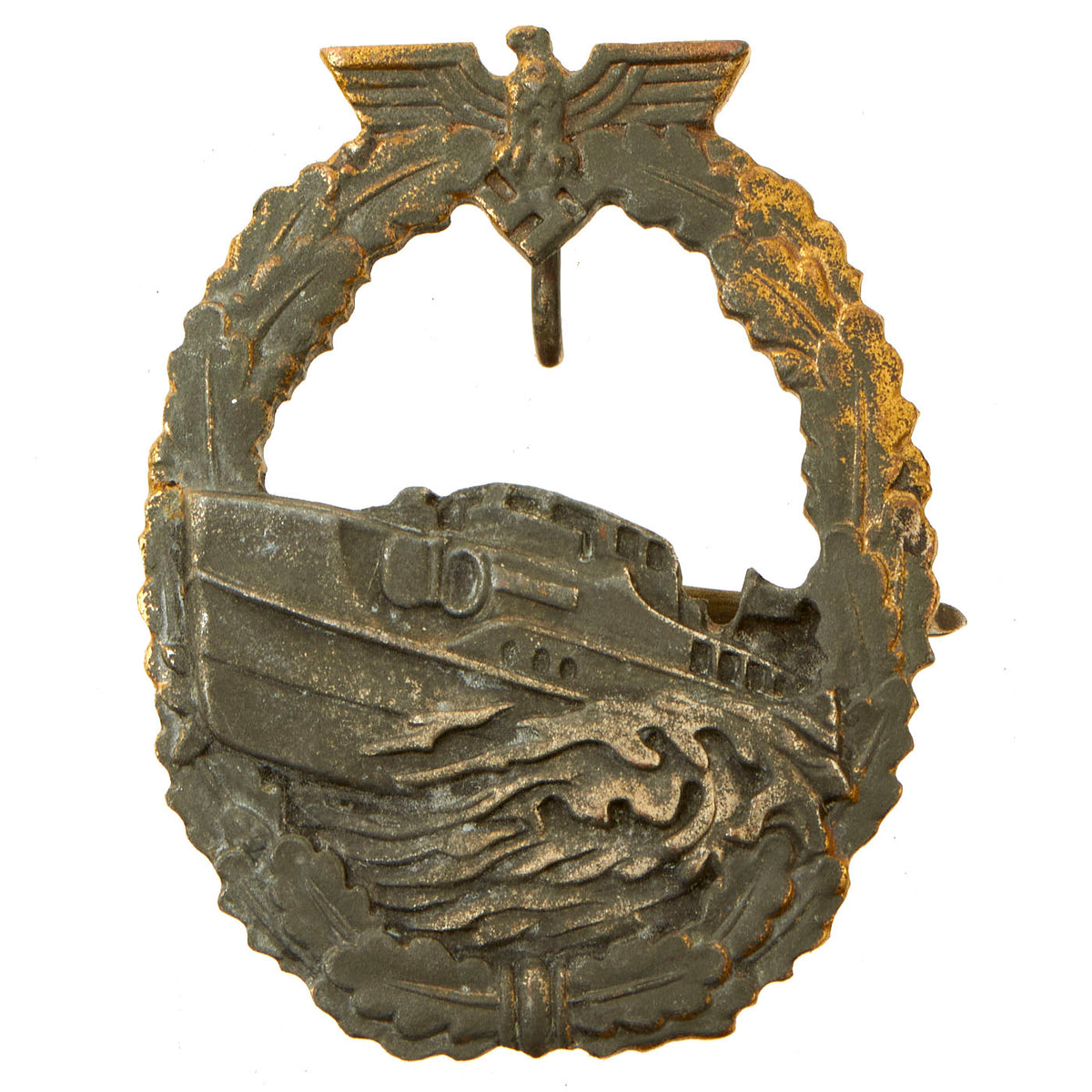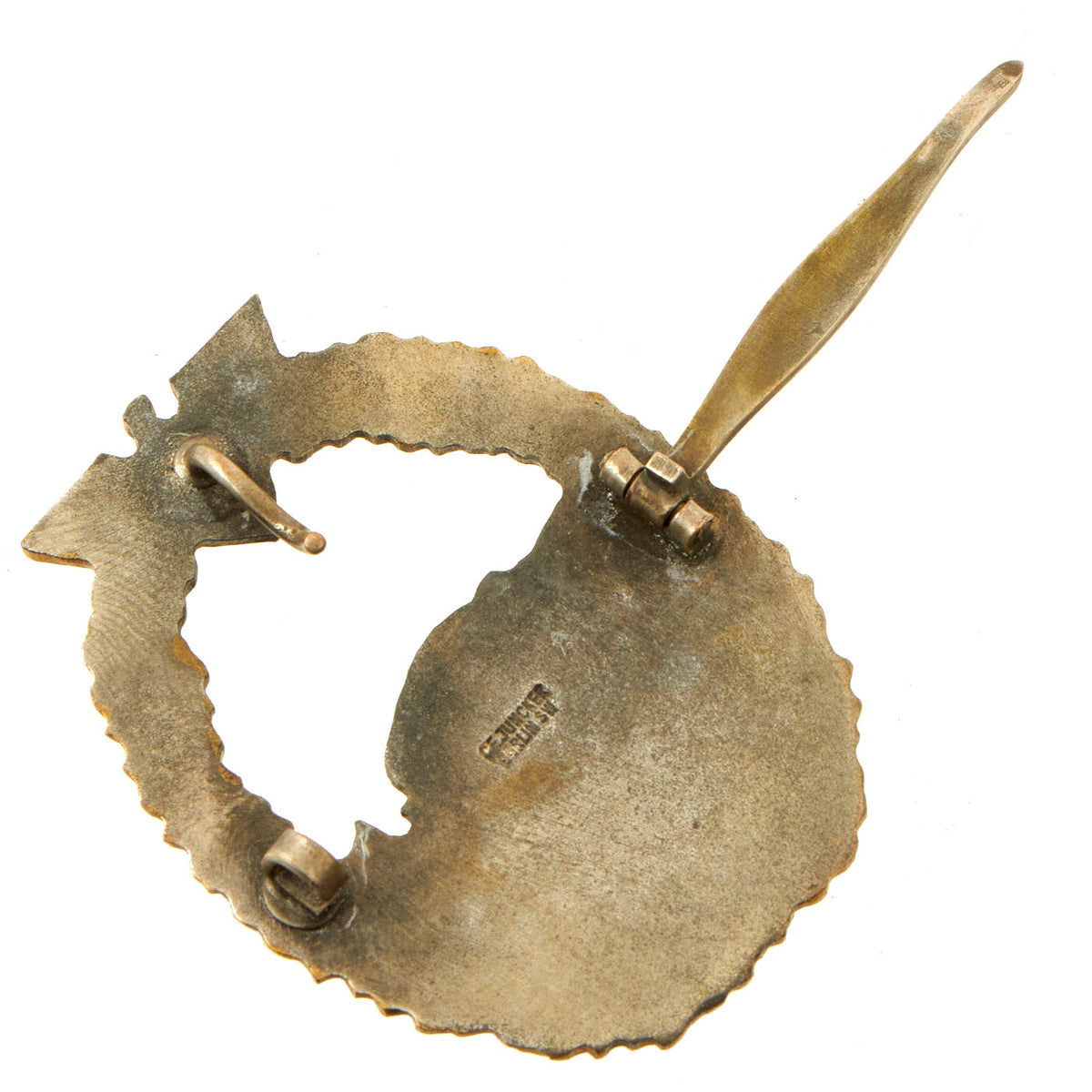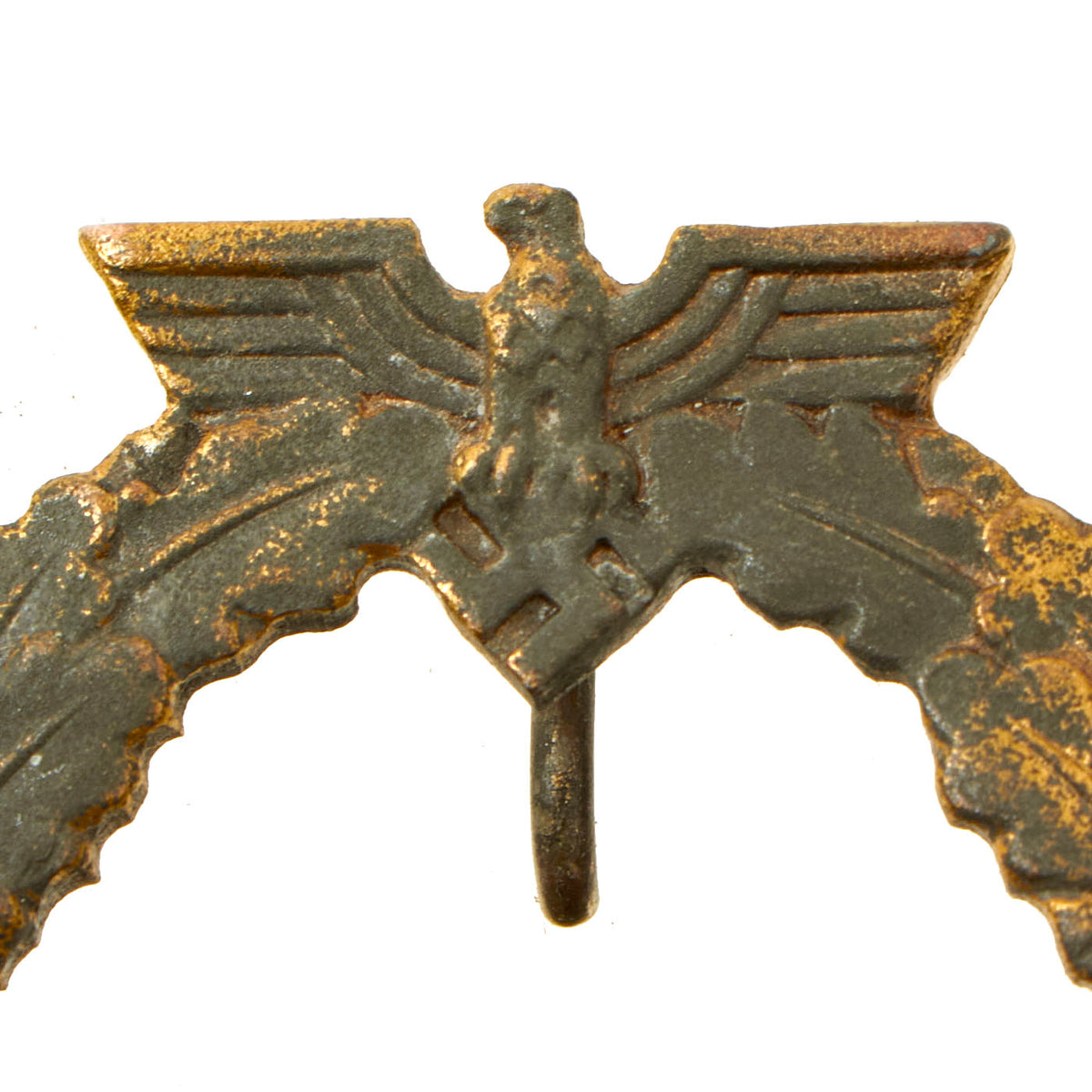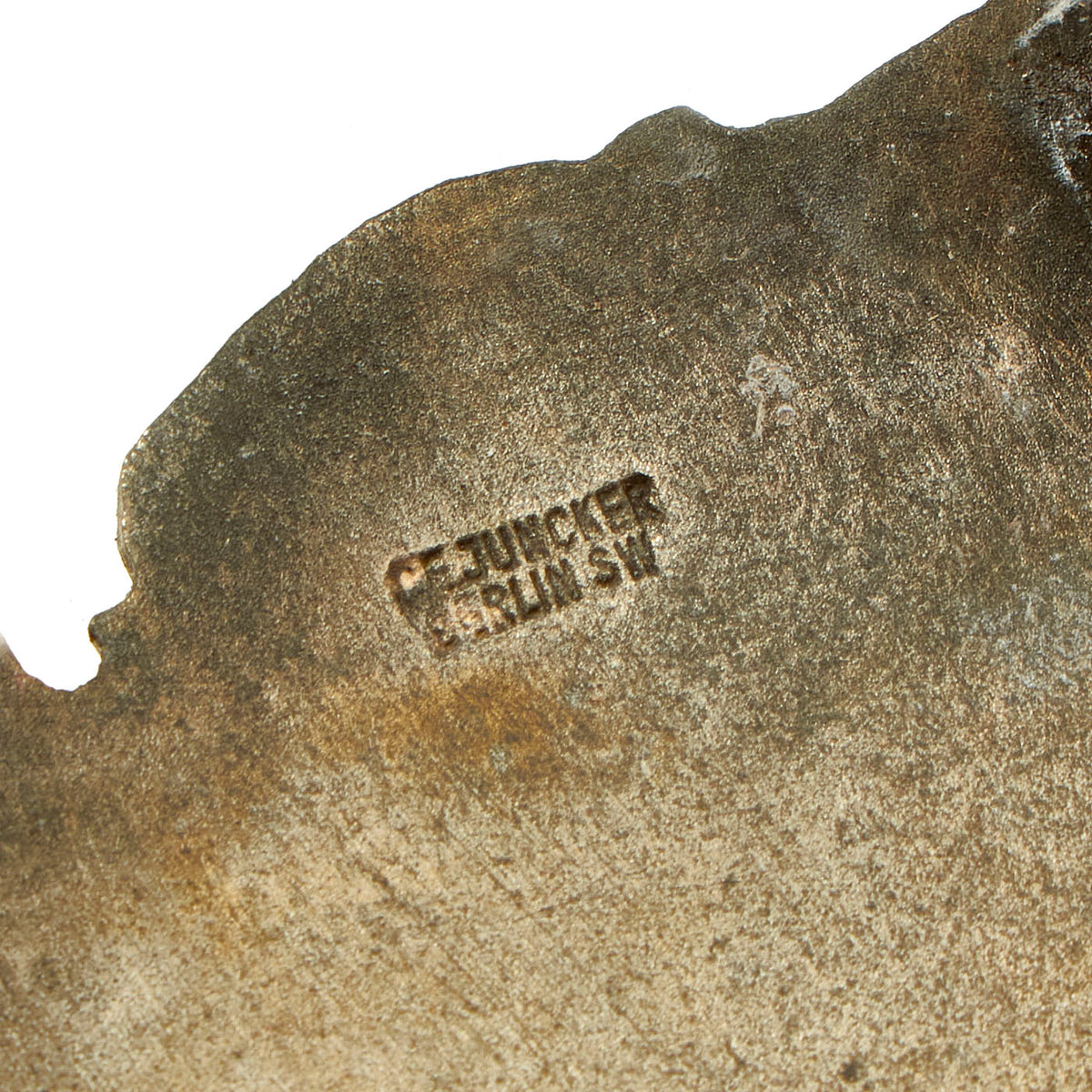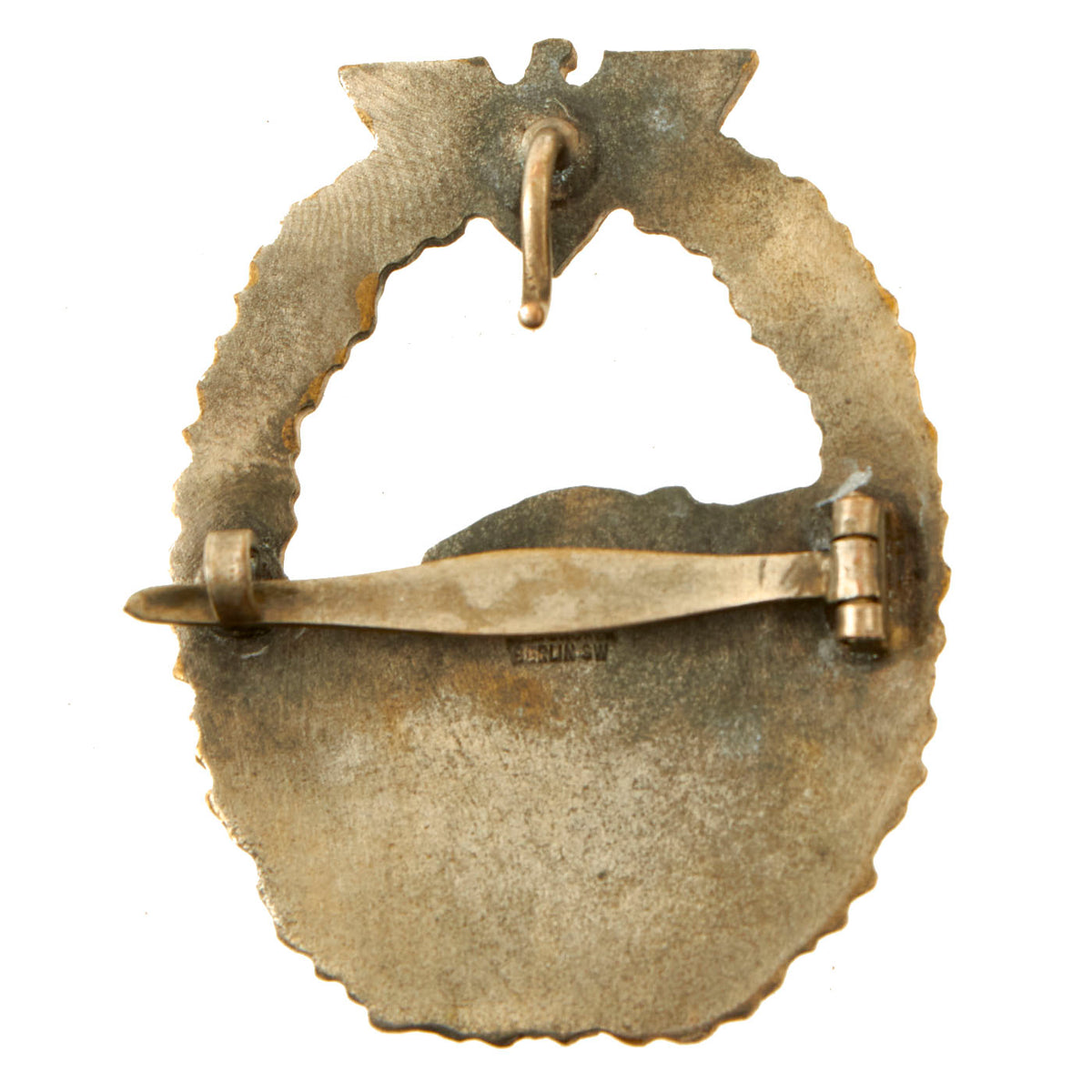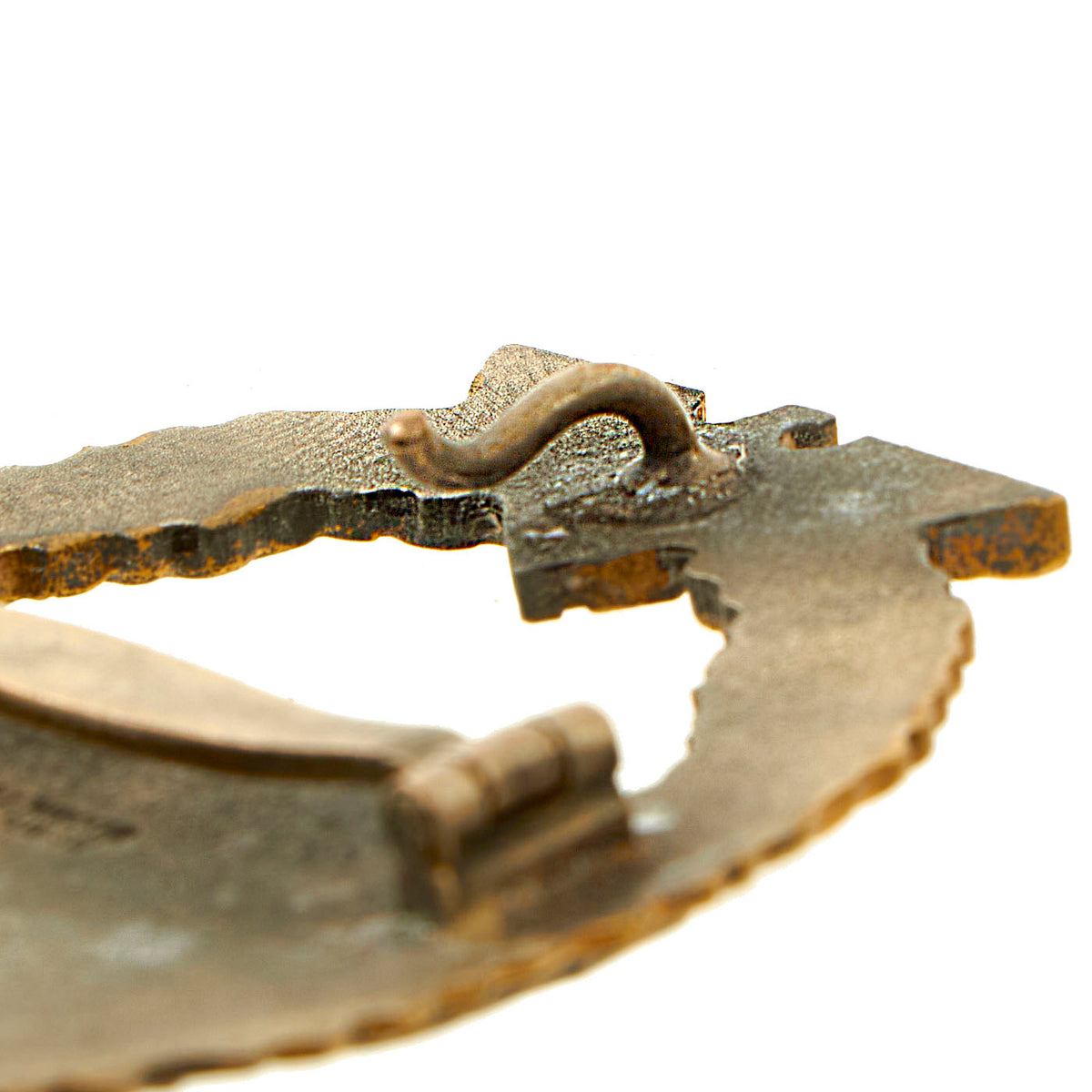Original German WWII Kriegsmarine 1st Model Fast Attack Craft War “S-Boat” Badge by C.E. Juncker Original Items
$ 495,00 $ 148,50
Original Item: Only One Available. The Fast Attack Craft War Badge or S-Boat War Badge was a World War II German military decoration awarded to members of the Kriegsmarine for service on fast attack craft or patrol/torpedo boats. The award was instituted on 30 May 1941. Requirements to receive the award included: an outstandingly successful sortie, wounded in action, 12 sorties against enemy vessels or installations, or outstanding leadership.
The medal was produced in two versions. The original 1941 version, this example, consisted of a “shorter high-silhouette” S-boat with an outer gold laurel wreath of oak leaves with the German Eagle at the top, while clutching a swas. The second later version was introduced in January, 1943. It had the same basic design, but with a “longer and newer” model S-boat and a larger German Eagle at the top. The badge was worn on the lower part of the left breast pocket of the naval service tunic, underneath the 1st class Iron Cross, if awarded.
This is a very nice example of the 1st Model S-boat badge, which still has some of the original silver wash on the “S-boat” shown on the obverse. There is also some of the original gold wash in the recesses of the wreath and eagle, with the back missing almost all the wash. The design has a hook on top and a sideways pin catch, definitely an interesting
design.
The back is marked with maker C.E. JUNCKER / BERLIN SW. Measures about 1.5 inches wide x 2 1/8 inches high. This is the first of these that we have seen, and it is a very nice example.
Ready to display!
S-Boat
E-boat was the Western Allies’ designation for the fast attack craft (German: Schnellboot, or S-Boot, meaning “fast boat”) of the Kriegsmarine during World War II; E-boat could refer to a patrol craft from an armed motorboat to a large Torpedoboot. The name of E-boats was a British designation using the letter E for Enemy.
The main wartime production boats, the S-100 class, were very seaworthy, heavily armed and capable of sustaining 43.5 knots (80.6 km/h; 50.1 mph), briefly accelerating to 48 knots (89 km/h; 55 mph). These were armed with torpedoes and Flak guns; commonly one 37 mm at the stern, one 20 mm at the bow with a twin mount amidships, plus machine guns. Armament varied and some S-100s substituted a 40mm Bofors or, less commonly, a 20mm flakvierling mount for the aft 37mm cannon.
The S-100-class boats were 35 m (114 ft 10 in) long and 5.1 m (16 ft 9 in) in beam. Their diesel engines provided a range of 700 to 750 nmi (810–860 mi; 1,300–1,390 km), substantially greater than the gasoline-fueled American PT boats and British motor torpedo boats (MTBs).
As a result of early war experience of combat against the fast and powerful S-boats, the Royal Navy created its MGB force and later developed better-matched MTBs, using the Fairmile ‘D’ hull design.
Fast Shipping with Professional Packaging
Thanks to our longstanding association with UPS FedEx DHL, and other major international carriers, we are able to provide a range of shipping options. Our warehouse staff is expertly trained and will wrap your products according to our exact and precise specifications. Prior to shipping, your goods will be thoroughly examined and securely secured. We ship to thousands clients each day across multiple countries. This shows how we're dedicated to be the largest retailer on the internet. Warehouses and distribution centres can be located throughout Europe as well as the USA.
Note: Orders with more than one item will be assigned a processing date depending on the item.
Before shipping before shipping, we'll conduct a thorough inspection of the items you have ordered. Today, the majority of orders will be delivered within 48 hours. The delivery time will be between 3-7 days.
Returns
The stock is dynamic and we cannot completely manage it because multiple stakeholders are involved, including our factory and warehouse. So the actual stock may alter at any time. It's possible that you may not receive your order once the order has been made.
Our policy is valid for a period of 30 days. If you don't receive the product within 30 days, we are not able to issue a refund or an exchange.
You can only return an item if it is unused and in the same state as the day you received it. You must have the item in its original packaging.
Related products
Uncategorized
Uncategorized
Uncategorized
Uncategorized
Uncategorized
Uncategorized
Uncategorized
Australian WWII Owen MK1 Machine Carbine SMG Custom Fabricated Replica with Sling Original Items
Uncategorized
Band of Brothers ORIGINAL GERMAN WWII Le. F.H. 18 10.5cm ARTILLERY PIECE Original Items
Uncategorized
Uncategorized
Uncategorized
Uncategorized
Uncategorized
Uncategorized
Armored Burgonet Helmet & Polearm from Scottish Castle Leith Hall Circa 1700 Original Items
Uncategorized
Uncategorized
Uncategorized
Uncategorized
